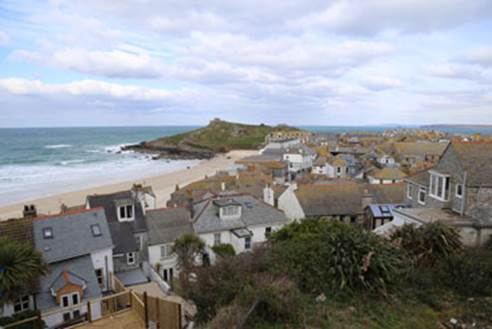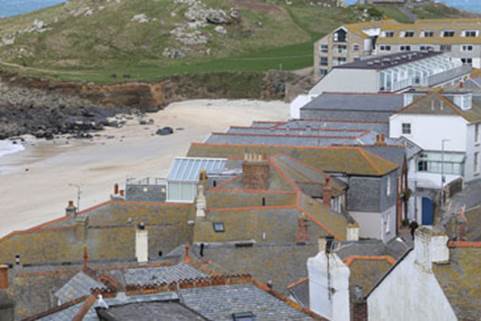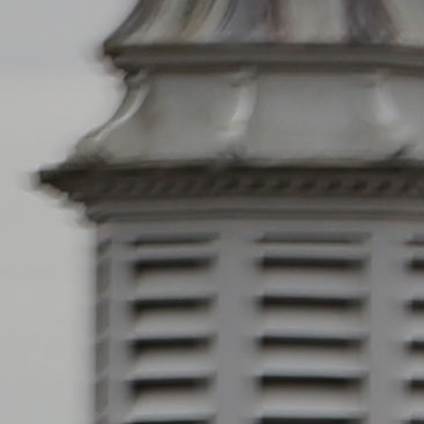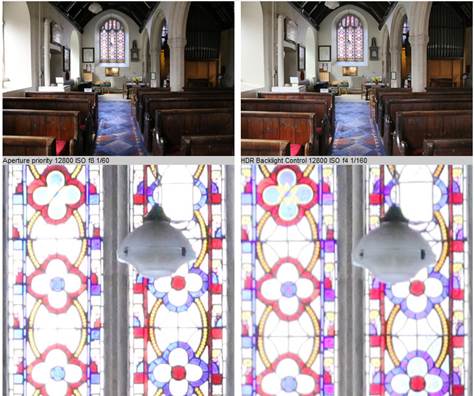Lenses and stabilization
EOS 6D shows up only as a body, with EF
24-105mm f4 L IS USM or 24-70mm f4L IS USM. I check it with the former; 24-105mm
provides a 4.3x magnification, which is quite suitable for the ability of
shooting portrait and landscape of 6D. Like an “L” model, the lens is designed
and structured according to the highest standard of Canon.
One thing to memorize if you’re upgrading
from an APS-C model like 60D is that you can’t use any EF-S lens on the 6D body.
Anyhow, if you intend to continue keeping 60D, you will be able to use the 24-105mm
f4L lens with it in a respective range of 38-168mm, not really wide angle
coverage as on 6D, but really useful for magnifying purposes or the same, in
general; and a great choice when teaming with EF-S 10-22mm super wide
magnification.

Canon
EOS 6D EF 24-105mm coverage wide 24-105mm at 24mm

Canon
EOS 6D EF 24-105mm distance coverage 24-105mm at 105mm
Being an L lens, as well as a high-quality
one, 24-105mm f4 has the weather cover on the stand, high-quality structure
with manual magnification with a smooth focus ring and comes with a lens hood
which can move upside down, addition to its compactness when not use. The zoom
and focus ring work through mechanical connection and even with lens auto-focus
settings, you can make full time manually focusing adjustment.
If there is any criticism about making the 24-105mm
f4L as general-purpose zoom set, it will be the f4 max aperture that is not
perfectly suitable for using in lowlight or creating shallow of the range for
the portrait shots. If that’s a concern, the older 24-70mm f2.8, discontinue
and cheaper-pricing may be a better choice. Remember that though you have a
wider maximum aperture stop, it lacks the additional remote shooting mode of 24-105mm,
additionally, you are sacrificing stabilization. Another choice if you want a
really good portrait lens without breaking the budget limit, move towards to EF
85mm f1.8 USM of Canon.
Back to 24-105mm, there are 2 switches on
the lens, one for choosing between auto and manual focus, the other is for
enabling stabilization. Canon announces 3 3 stabilization points for EF
24-104mm and I test it by magnifying to the 105mm focal length and take a
series of photos in primary Shutter mode at slower processing speed with
deactivated stabilization and then repeat the process with stabilization open.

100%
crop, 24-105mm 100 ISO 1/8th IS of

100%
crop, 24-105mm 100 ISO 1/8th IS on
As you can see from the cropped picture
above, with IS enabled you can keep 6D sound at low speed which is down to 1/8th-
a little more than 3 stops, slower than the wise conventional advice without
stabilization and a bit better than the 3-point notification of Canon.
Shooting mode
The mode dial of EOS 6D is much less
disorder than 60D because the degree of personal scene mode is lowered to
support the mono-SCN position that sets up the selecting scene mode, changing
from Quick control screen. And the only difference that 60D users have to be
familiar with is the shortage of filming position.
But just because 6D is a full frame camera
doesn’t mean that Canon outrun the fully-auto and new user-friendly shooting
mode. Scene Intelligent Auto use the same scene-specifying algorithm found on
other compact Canon models, to define the best exposure settings for the
situation, including scene with people, moving subjects, foreground and
diversified lowlight condition. In Live View, an icon showing the selected scene
option of the camera is displayed at the right corner of the screen.
6D also provides Creative Auto (CA) shooting
mode allowing adjusting the creative depth range, white balance and other
factors through the easy-to-use selection screen. As Scene Intelligent Auto,
Creative Auto mode is much better in Live View where the control is kind of
more intuitive and you have image feedbacks or, to place it by another way,
what you see is what you have.
Like 5D Mark III, 6D provides Auto Lighting
Optimizer and Highlight Tone Priority to boost contrast and recover the broken
highlights, in that order. Highlight Tone Priority works at minimum 200 ISO and
expand the operating range from 18% grey standard to lighten the highlights.
In terms of history, the bracketing control
on EOS DSLRs falls behind other manufacturers but everything seems to change
with 5D Mark III first and now 6D provides up to 7-bracket options in the range
of +/- 8EV with a chain of options. The white balance bracket is also proposed
but not the ISO bracket. As said, it’s a step forward from the 3-frame exposure
bracket on 60D and it is meaningful with all other EOS models excluding 1Ds and
5D Mark III. More importantly, it shows the superiority against 3 basic
brackets of D600, if you want more than that on full frame Nikon DSLR you have
to make further steps to D800, which can shoot up to 9 brackets.
One thing worth noticing, though, is that 6D
lacks everything to compare with the sophisticated timing function of D600.
Canon always falls behind Nikon for time-lapsing function and 6D doesn’t change
that, however, with an existing wireless control through EOS utility you can remotely
timing shoot by a laptop or MacBook, that’s an innovation. Look at the section
on the Wi-Fi below to know more operating details of that.

Canon
EOS 6D Aperture / HDR Backlight Control Priority
6D also includes HDR Backlight Control scene
mode introduced on EOS 650D; this takes 3 continuous shots, when combining,
this creates a result with expanded operating range. |HDR Backlight Control sets
ISO sensitive setting and auto exposure. I test it by shooting in HDR Backlight
Control mode and compare it against a photo taken in Aperture priority mode
with relative ISO sensitive settings in this case is 12,800.
The result shown above is more impressive
than my previous test with 650D and it seems that Canon has improved HDR processing
to keep the detail more outstanding, as well as create obvious improvement in shadows.
The cropped images from the stained glass window catalogue show noticeable
improvements in the highlights. You don’t need to crop to see the improvement
in the shadows which is almost obvious in the bench at the right corner and the
organ on the top right. The graph provides the confirmation of the level that
the highlights and the shadow details are recovered.
Another noticeable thing about HDR backlight
control is that the image area is slightly lowered by the results of the
complex process that aligns 3 frame and crops any unnecessary part, even when,
like here, the camera is placed on the bracket.
Finally, there’s a multiple exposure option
allowing you to shoot from 3 to 9 photos which then overlap each other in the
camera. If you shoot Live View you can see the effect on the screen as well as
gathering multiple-exposure. This kind is much better when managed in Photoshop,
but it’s a useful choice for those want it without having to rearrange to edit
images.